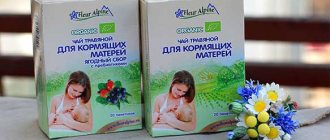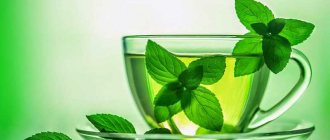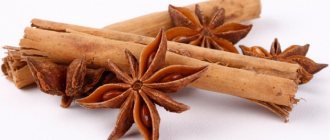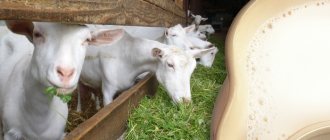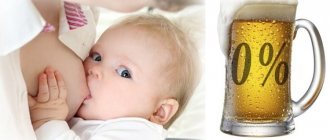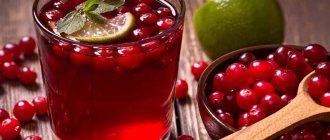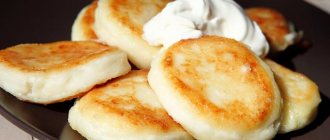Women after childbirth are forced to change their diet. Caution when consuming certain products is fully justified - after all, a child, due to his fragile body, cannot take most microelements, even if they are the most beneficial. How are things going with the jelly? After all, jelly is an excellent light dessert, the ingredients of which can be selected to suit any taste preferences. So, can a woman have jelly while breastfeeding, what role does it play in the baby’s life, and what types are more preferable in the mother’s diet?
Rules of use
To prevent jelly from harming the baby, a woman should adhere to certain rules when introducing this dessert into her diet:
- They try jelly no earlier than a month after giving birth.
- Acquaintance with the product should take place in the first half of the day, no more than 3 sips. Next, the baby’s well-being is monitored. If the child tolerated the dish calmly, you can increase the portion.
- You should not mix the components; at the initial stage, choose 1 fruit/berry.
- For the first fruit dessert, it is better to use green apples; they are more tolerant of children's digestion. After another month, you can add other fruits or berries.
- All products must be fresh, clean, without damage or rot.
- If the jelly comes with starch, give preference to corn, it does not cause heartburn and does not have such a depressing effect on children’s intestines.
- Kissel is best consumed warm.
- It is better for mothers to give preference to liquid jelly - they help with lactation and are better absorbed by the body.
- If a mother or child is prone to constipation, berries should be excluded from food. They cause irritation. The best solution would be oatmeal jelly.
- It is better to cook oatmeal jelly in water. Cow protein can cause severe allergies in children.
- If the recipe uses nuts or dried fruits, they are crushed and soaked in cold water so that the bitterness comes out and the products become softer.
- Use sugar and spices to a minimum.
Store-bought powdered jelly should be excluded! Flavor enhancers, dyes and harmful additives that are found there have a negative effect on the child’s body.
Beneficial features
Kissel is definitely a useful product.
Doctors have proven that drinking this viscous drink greatly helps the body:
- improves the functions of the digestive system;
- cleanses the intestines, removes waste and toxins;
- increases immunity, has antiviral and anti-inflammatory properties;
- normalizes liver function, has a beneficial effect on the pancreas;
- gives the body the necessary vitamins, charges it with energy;
- prevents the accumulation of pesticides and radionuclides;
- perfectly envelops and soothes the stomach, therefore it is recommended for problems with the gastrointestinal tract;
- reduces nervous tension, improves mood;
- makes hair shiny, strengthens nails and rejuvenates skin;
- lowers cholesterol levels.
In addition, each type of jelly separately has advantages and benefits. This helps to individually solve certain problems by including the necessary ingredient in the dish.
Possible harm
Every barrel has a fly in the ointment. Is it in this product? Is it possible for a mother to calmly consume jelly while breastfeeding, without harming the health of her baby?
There is, of course, possible harm from this thick drink and it must be taken into account:
- Kissel can cause allergies in both mother and child.
- If a dish is prepared not from natural ingredients, but from powder, the body may be at risk of poisoning.
- The child will not tolerate this dessert well if the mother has consumed too much of it.
Jelly, as a product, has no side effects unless there is an individual intolerance to a certain ingredient. It is not the dish itself that causes harm, but its incorrect introduction into the diet at the first stages.
The main rule when breastfeeding is to do everything on time. If jelly is introduced into the diet ahead of time, it will do more harm to the child than good.
Is it possible to drink jelly during lactation?
A nursing mother always double-checks every new product before including it in her diet.
Considering that drinking jelly can protect a mother from a number of health problems, we can say with confidence: this drink can be consumed during lactation. But at the same time, a number of recommendations should be followed to make it safe for the baby.
When to start drinking
In the first month of life, oatmeal jelly is most suitable for a child’s body. It is better to use water or diluted milk as a base (you need to choose milk carefully). After 2 months, you can introduce fruit jelly with the addition of vegetables or jelly using berries.
Try jelly for breakfast (half a glass) and monitor the baby for 24 hours. Even if the child reacted calmly, the amount of dessert should not exceed 1 glass per day.
If a nursing mother prefers fruit desserts, you should start with green apples. You can also try it in the first month of your baby’s life. They contain a large amount of pectin, they do not cause allergies, moreover, these varieties are the first to introduce a child to fruits. The basis is mashed green apple puree, peeled. You can use white apples later.
To avoid colic and gas formation, jelly should be consumed liquid. You should wait with thick recipes until the baby is 5 months old.
Types of jelly
There are many types of this light dessert.
May include:
- Rye bread;
- tea;
- citrus;
- vegetables;
- herbs;
- berries;
- fruits;
- flour.
We will only talk about those jelly products that are recommended for lactation.
- Oatmeal jelly. One of the healthiest dishes under Guards. It absorbs and removes harmful substances from the body. Oatmeal acts as a thickener, so there is excess starch in this dessert. This thick drink invigorates, has a beneficial effect on the heart, improves digestion, and supports the immune system.
- Fruit jelly. Apple jelly is considered the best dessert. This dish contains vitamins, prevents anemia and is good for losing weight. The main thing is that it is better to forget about yellow and red apples, but you should also use jelly with caution with green varieties. Children's digestive systems may not yet be ready for this product. Carrots go well with apples.
- Berry. Considered a light dessert. This jelly perfectly helps prevent diseases and is a good helper for the body if the disease has already occurred. The best choice would be cranberries or blueberries - they increase immunity, are recommended for vision and can improve the digestive system. If the child’s body is ready for berries, you can include red/black currants and cherries.
- Lactic. Is it possible for a nursing mother to make jelly from milk? This dessert has a beneficial effect on the microflora in the intestines and is necessary for the good development of bones and muscle tissue. Milk is rich in calcium, magnesium and phosphorus. The answer is definitely possible, but later. Milk can cause itching, colic, rash, diarrhea/constipation. It is recommended to use it no earlier than the baby is 5 months old. Full-fat milk is especially contraindicated.
- Dried fruit jelly. This dish perfectly cleanses the stomach and saturates the body with essential substances.
- Almond jelly. This delicious dessert is nutritious and satisfying in its composition. Nuts are rich in amino acids and proteins. But it is recommended to introduce it as one of the last ones - almonds are considered a strong allergen.
Kissel is very useful in its properties. If you prepare it correctly and introduce it according to the rules, the child’s body will only benefit from such a dish in the mother’s diet.
Apple jelly in the first months of breastfeeding
Any pediatrician will answer the question: is it possible to use jelly during breastfeeding - yes, especially apple jelly. To prepare it you will need:
- 2 apples;
- 3 tbsp. l. Sahara;
- 1 tbsp. l. starch;
- 0.5 liters of water.
Recipe
- Wash the apples well.
- Pass the peeled fruits through a meat grinder or grate with a grater;
- Mix apples with sugar and leave for about 20 minutes.
- Mix starch with cold water and add to apples.
- Place a saucepan of water over medium heat.
- Add apple pulp and cook, stirring the jelly constantly.
- At the moment the drink is started, it is necessary to remove it from the stove.
- Allow the drink to cool and you can serve it.
It is necessary to use jelly according to this recipe with caution, in small doses, observing the reaction of the child’s body.
Recipes for nursing mothers
So, we figured out whether a nursing mother can drink jelly. Now it’s important to cook them correctly. Let's look at the simplest and healthiest recipes.
Oatmeal jelly
- 1 tbsp rolled oats;
- 1.5 glasses of warm drinking water;
- 40 grams of good butter;
- sugar and salt as desired.
Pour water over the cereal overnight and leave it covered. After 10-12 hours, strain the mixture and place the strained liquid on low heat. Cook until the dessert thickens, remembering to stir thoroughly. Add butter and salt to the finished dish and remove until completely cool. At the end you can sprinkle with sugar.
Berry jelly
- 1 tbsp of any berry (you need to start with one type);
- 2.5 tbsp drinking water;
- 1 heaped tablespoon of starch;
- sugar.
Thoroughly washed berries are poured with 0.5 cups of warm water and rubbed well through a sieve. Pour the resulting juice into a glass. Pour 400 ml of water over the berries that remain after squeezing and boil for 6-7 minutes over high heat. Strain this mixture, add sugar and simmer on the fire.
While the future jelly is on the stove, dilute the starch (you will need 4 tablespoons of water) and add it to the drink, stirring thoroughly. Heat the dish well, without bringing it to a boil. Remove, add the original juice, mix well.
Apple-carrot jelly
- 3 large apples without peel;
- 1 carrot without peel;
- 2 tbsp drinking water;
- ¾ tbsp sugar;
- 1.5 tbsp starch.
Cut the apples into thin slices, grate the carrots. Sprinkle the fruit and vegetable mixture with sugar and leave for 20 minutes. Then add water and put on the stove for 45 minutes. Strain the resulting compote and return it to the stove. Separately, dilute the starch in cold water and add it to the jelly in a thin stream. As soon as everything is well mixed, remove the jelly from the heat.
To prevent the formation of a film or crust on the jelly, it is recommended to add 1/3 cup of cold drinking water.
Milk jelly
- 2 tbsp milk (low-fat or ½ with water);
- 2 tsp starch;
- granulated sugar or vanilla sugar to taste.
Leave half a glass of milk for starch. Pour granulated sugar into 1.5 tbsp of milk and put on fire. Bring the liquid to a boil. Add carefully diluted starch into boiling milk in a thin stream and mix well. Pour into plates and cool.
Dried fruit jelly
- 5 tbsp boiled water;
- 100 grams each of raisins, prunes and dried apricots;
- 2 tbsp starch;
- cinnamon, cloves and sugar as desired.
Rinse everything thoroughly, boil water and pour the ingredients with spices for 30-35 minutes. Cook over high heat for 7 minutes until the dried fruits become soft. Mix half a glass of cold water with starch and, stirring thoroughly, add it in a thin stream to the jelly. Immediately after boiling, remove the liquid from the heat. Cool.
- Related Posts
- Rusks during breastfeeding: a healthy treat, or taboo
- Ryazhenka in a complete diet during breastfeeding
- Eggplants for a nursing mother
« Previous entry
Excellent jelly during breastfeeding
A doctor can give an accurate answer as to whether a nursing mother can have jelly if the baby has problems with the stomach - diarrhea or constipation, but there are many proven ways to improve the functioning of the baby’s gastrointestinal tract using jelly therapy.
Oatmeal jelly will help cope with stomach and intestinal disorders during breastfeeding. To prepare it you will need:
- oat flakes - 0.5 kg;
- 1 liter of water;
- salt to taste;
- black bread - 1 slice;
Kissel during breastfeeding, a recipe that helps relieve stomach problems, can be consumed constantly:
- Pour water over the flakes and leave to soak overnight.
- Add a slice of bread to the cereal and leave for another 1 hour.
- Remove the loosened bread and grind the flakes through a sieve.
- Pour the porridge into a saucepan with water and place on low heat.
- As soon as the drink boils, you need to keep it boiling for 2-3 minutes, then remove from the heat.
- After cooling, strain and can be served.
Instead of water, you can use milk; such a drink will help strengthen the intestines and eliminate diseases associated with it. The dish will turn out to be very satisfying, so it is considered an excellent option for fighting extra pounds, since you won’t be able to eat too much of this jelly, and the body will be full for a long time.

